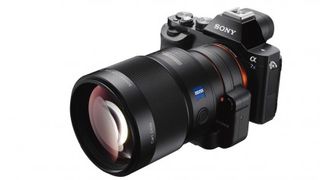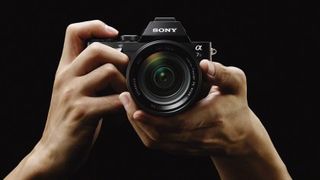Why you can trust TechRadar
While its lower pixel count means that the Alpha 7S can't resolve nearly as much detail as either the Alpha 7 or 7R, or the 16Mp Nikon D4S, images still look sharp straight from the camera and have enough detail to make high-quality A3 prints.
Noise is also controlled well and although I wouldn't recommend using ISO 409,600 unless you really have to, the results when shooting real-world scenes look a little better from the 12Mp A7S than they do from the Nikon D4S.
As we have seen from other recent Sony cameras, JPEGs have little in the way of chromatic noise even at high sensitivity settings. However, at 100% (actual pixels) on-screen there's a stippled texture that get's stronger as sensitivity increases. This may look alarming at 100%, but it manages to give the impression of detail at more common viewing sizes.

While it wouldn't be my first choice for shooting sport, it's clear that the A7S's AF system can lock onto and track moving subjects in good light.
In Lock-on AF: Flexible Spot mode it draws a box around what it believes to be the subject and then follows it across the frame. In most cases it appears to do a good job in decent light, but it can sometimes latch onto the wrong object and the size of the box sometimes makes it hard to see exactly where the system is focusing.
I found that the camera also manages to focus the lens automatically in low light conditions that challenge many other CSC's, but it is slower than a comparably priced SLR. That said, it doesn't tend to suffer badly from hunting until light levels get very low, or with close subjects.
When shooting video the autofocus adjusts smoothly and silently in decent light, producing high quality, sharp footage. However, as with stills, you need to take care with subjects close to the lens' minimum focusing distance as hunting can become an issue.
Images are generally well-exposed, but the brightness of the subject under the active AF point can skew the exposure a little when using the Multi-segment metering. I also found that the Alpha 7S isn't overly affected by bright areas within an image and this means that landscapes under bright skies usually look good. However, some scenes can be rendered a little too brightly and if you're shooting just JPEG files it pays to keep an eye on the highlights.
The exposure compensation facility can come in handy from time to time to avoid the brightest areas from being lost. Thanks to the high dynamic range of the A7S's raw files, it's often possible to bring back detail where it is lost in simultaneously captured JPEGs.
In the default 'Standard' Creative Style, JPEG images look very natural, although occasionally they can look a little flat in comparison with the vibrant images from some other cameras, and may benefit from a slight boost to the saturation. Naturally, this won't be an issue for raw file shooters, but those who want a bit more punch direct from the camera can opt to use the 'Vivid' or 'Landscape' Creative Styles.
The automatic balance system also generally puts in a decent performance, but the results can be variable in shady conditions. On some occasions it makes the image look a bit too cool and the Daylight setting produces more attractive results, but on other occasions the exact opposite is true. Again, this is unlikely to be a major issue for experienced raw file shooters and videographers who are comfortable with grading footage.

We have found before that the A7-series of cameras tend to gobble through battery power and the A7S is the same. I found I was able to use the camera for around half a day (I turn the camera off between shots) and got in the region of 360 shots with simultaneous raw and JPEG file capture giving 720 files in total. This makes a second NP-FW50 battery essential for many users. Buyers in the US get a slightly better deal here as Sony bundle the camera with two batteries rather than just one, as in the UK and Australia.

